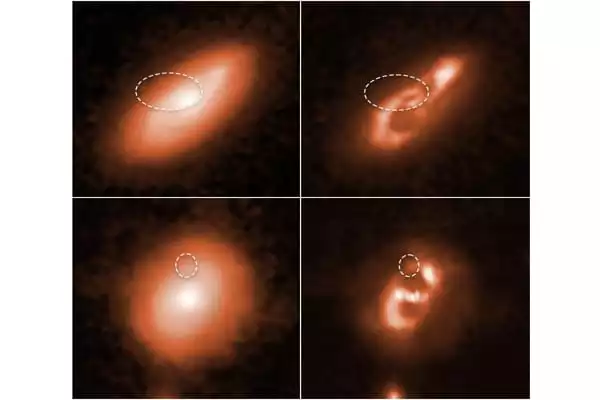In astronomy, a radio source is any of the various objects in the universe that emit relatively large amounts of radio waves. Nearly all astronomical objects emit some radio radiation, but the most powerful emitters are pulsars, certain nebulae, quasars, and radio galaxies.
Astronomers have discovered unusual signals coming from the Milky Way’s core. The radio waves fit no known pattern of the variable radio source and may indicate a new class of stellar object.
“The strangest feature of this new signal is its extremely high polarisation. This means that its light only oscillates in one direction, but that direction rotates over time “said Ziteng Wang, the study’s lead author and a Ph.D. student at the University of Sydney’s School of Physics. The brightness of the object varies by a factor of 100, and the signal appears to switch on and off at random. It’s unlike anything we’ve ever seen.
Astronomers have detected a very unusual variable radio signal from towards the heart of the Milky Way, which is now tantalizing scientists.
Many different types of stars emit varying amounts of light across the electromagnetic spectrum. With tremendous advances in radio astronomy, the study of variable or transient objects in radio waves has become a vast field of study that is assisting us in unraveling the mysteries of the Universe. Pulsars, supernovae, flaring stars, and fast radio bursts are all examples of varying brightness from astronomical objects.
“We initially thought it was a pulsar, a very dense type of spinning dead star, or a type of star that emits massive solar flares. However, the signals from this new source do not match what we would expect from such celestial objects”, Mr. Wang stated.
The discovery of the object has been published in the Astrophysical Journal.

Mr. Wang and an international team of scientists from Australia’s national science agency CSIRO, Germany, the United States, Canada, South Africa, Spain, and France discovered the object in Western Australia using the CSIRO’s ASKAP radio telescope. Follow-up observations were made with the MeerKAT telescope at the South African Radio Astronomy Observatory. Professor Tara Murphy, also from the Sydney Institute of Astronomy and the School of Physics, is Mr. Wang’s Ph.D. supervisor.
According to Professor Murphy: “Throughout 2020 and 2021, we have been surveying the sky with ASKAP to find unusual new objects for a project called Variables and Slow Transients (VAST). We discovered ASKAP J173608.2-321635, named after its coordinates while looking towards the center of the Galaxy. This object was unique in that it began invisibly, then became bright, faded away, and reappeared. This was extraordinary behavior.”
The astronomers attempted to locate the object in visual light after detecting six radio signals from the source over a nine-month period in 2020. They discovered nothing. They tried again with the Parkes radio telescope, but this time they couldn’t find the source.
According to Professor Murphy: “In South Africa, we tried the more sensitive MeerKAT radio telescope. We observed the signal for 15 minutes every few weeks because it was intermittent, hoping to see it again. Fortunately, the signal returned, but we discovered that the source’s behavior had changed dramatically: the source vanished in a single day, despite having lasted for weeks in previous ASKAP observations.”
This new discovery, however, did not reveal much more about the secrets of this transient radio source. Professor David Kaplan of the University of Wisconsin-Milwaukee, Mr. Wang’s co-supervisor, stated, “The information we do have has some parallels with another emerging class of mysterious objects known as Galactic Centre Radio Transients, including one dubbed the ‘cosmic burper.”
“While our new object, ASKAP J173608.2-321635, shares some properties with GCRTs, it also has some differences. And, in any case, we don’t really understand those sources, so this adds to the mystery.” Scientists intend to keep a close eye on the object in order to gather more information about it.
The transcontinental Square Kilometre Array (SKA) radio telescope will go online within the next decade. Every day, it will be able to create sensitive maps of the sky. According to Professor Murphy, “We expect that the power of this telescope will help us solve mysteries like this latest discovery, but it will also open up vast new swaths of the cosmos to radio spectrum exploration.”





